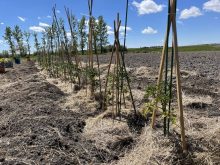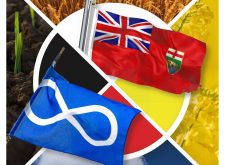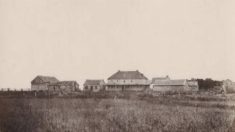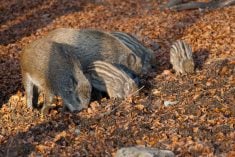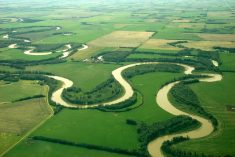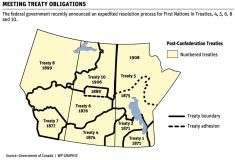In 1975, a program called the Manitoba Indian Agriculture Program (MIAP), funded by the Department of Indian Affairs, was established to boost agricultural output in Manitoba First Nations communities.
At the time, agriculture was an important way of life for many Indigenous Manitobans. However, because they didn’t have access to the resources and finances available to non-Indigenous farmers, most of these farms were at a subsistence level. MIAP sought to give access to resources and credit to help level the playing field. The program’s goals included increasing the acres farmed in Indigenous communities, increasing the number of Indigenous farms, and increasing the income for each of these farms.
The program also sought to improve the agricultural knowledge base in Indigenous communities by funding and encouraging young Indigenous students to earn a diploma in agriculture from the University of Manitoba School of Agriculture. The program was dismantled in 1993 as a result of shifting priorities in the federal government.
Read Also
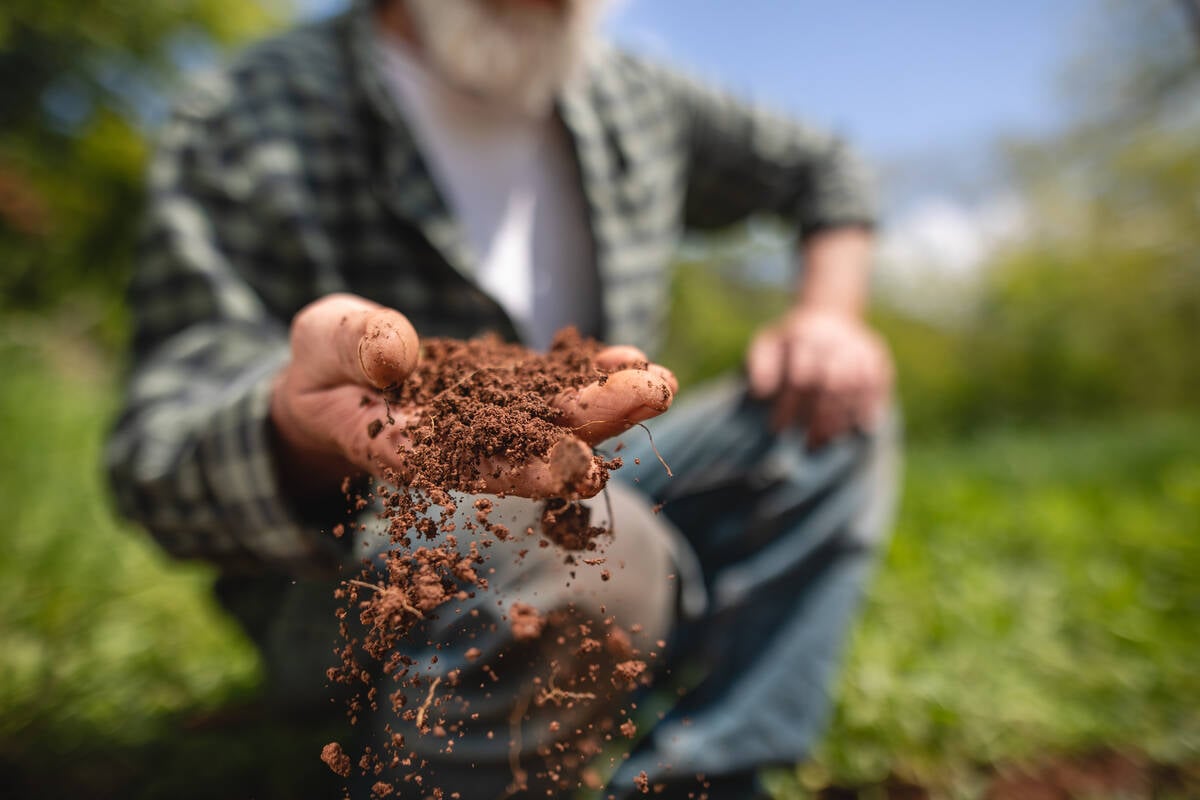
Finally getting paid for sustainable farming?
Alberta project says they might have a line on a workable ecosystem credit model to reward farmers for sustainability, and Manitoba might be next
Ardell Cochrane, Robert Maytwayashing and E.J. Fontaine were among the last MIAP-funded students to graduate from the diploma program and are featured in a recently finished video called, “Indigenous Voices – Sharing our Agricultural History and Journey.”
The 24-minute film, the first in a series of three exploring Indigenous experiences in agriculture, shares the stories of these three School of Agriculture alumni. It explores their experiences while attending the program and how it subsequently impacted their lives.
The film, directed by Erica Daniels, was launched at the Robert B. Schultz Theatre at the U of M on May 31. Faculty of agricultural and food sciences director, Michele Rogalsky introduced the film at the screening and explained the genesis of the project.
“The Indigenous Voices video series is a result of the strong support the School of Agriculture has received from many Indigenous leaders. Several years ago, we reached out to E.J. Fontaine, Eva Wilson-Fontaine and Robert Maytwayashing. We asked for their guidance and support in responding to the Truth and Reconciliation Commission’s calls to action. With their help, we connected with many Indigenous leaders, which resulted in partnerships on several projects, including this video series,” said Rogalsky.

The funding for the video series, through the University of Manitoba Indigenous Initiatives Fund, was approved in January 2021.
“We were awarded $60,000 to produce a series of professionally produced, culturally relevant videos that featured Indigenous leaders and nations,” said Rogalsky. The intent is for the videos to be woven into the content of several ag diploma courses and to be used to enhance the cultural sensitivity training for staff and students.
The film highlights the journeys of the three alumni.
E.J. Fontaine grew up in Sagkeeng First Nation on the Winnipeg River.
“I was always exposed to farming growing up as a child,” he recalls in the film. His grandfather was a grain farmer and raised cows.
“What I noticed was that they really worked hard. They had to, just to be self-sufficient. It was a really good experience for us.”
That experience — seeing his grandfather work the land and also working the business side of the farm — taught him the value of hard work and accountability.
Ardell Cochrane grew up in Peguis First Nation and was raised on her father’s 2,100-acre farm — large in comparison to most Indigenous farms. But while the size of the farm is in line with many non-Indigenous farms at the time, the lifestyle was distinctly Indigenous. “There was a lot of hunting and fishing,” she says in the film. “I remember my dad going out hunting with my brothers, uncles and brothers-in-law and coming home butchering the deer and giving it to the elders. It was a beautiful way of life.”
Ardell’s father, Tom Cochrane, was heavily involved in the setup of MIAP and served on the MIAP board of directors from the program’s inception.
Robert Maytwayashing grew up in Winnipeg, but his family is from the Lake Manitoba Treaty 2 Reserve. He explains in the film that his parents left the reserve in the late 1950s, when they could leave, to make a better life for themselves. But on weekends, he would go to Lake Manitoba or Long Plain First Nation, where his father was from. His grandparents and parents raised livestock like horses, chickens and geese and grew a large garden to feed their family.
“It wasn’t viewed as a farm per se, it was just something that my grandparents and parents did to help sustain themselves,” he said.
The film continues on to trace the experiences with the diploma program, some of their struggles and successes with academia and how the program affected their lives, subsequently.
Today, E.J. and his wife, Eva Wilson-Fontaine, are entrepreneurs who founded AMIK, a company providing Indigenous workforce engagement and training services, and Cedar Lake Ranch, a training centre and meeting place. Robert works with the Interlake-Eastern Regional Health Authority as their Indigenous human resource development officer. And Ardell is the executive director of the First Nations Health and Social Secretariat of Manitoba. Each of them attributes at least some of their success to their studies at the U of M.
The three alumni also share some regret over the demise of the MIAP and would like to see a modernized version of the program that would again encourage First Nation participation in agriculture.
“When we did the program, they were drawing the students from existing farms in Indigenous communities,” said Fontaine, during the question-and-answer period following the screening. “Now there are no farms. There’s no draw anymore. We have to create a new one.”
In an interview after the screening, Michele Rogalsky echoed the disappointment in the demise of agriculture in First Nations communities, but she’s optimistic that better things are on the horizon.
“I think it’s starting to build again. The momentum is there,” she said. Though she says she doesn’t see it including larger commercial agriculture production, like beef and grain. She sees it more as something that is more community oriented. She points to the work the faculty is doing now in Peguis and Brokenhead.
“It’s more focused on food security, horticulture and growing food for families, for good nutrition, for healthy environments, all while supporting the land.”
The next two films in the series will include a video about The Community Gardens in Peguis and another about E.J. Fontaine’s and Eva Wilson-Fontaine’s Cedar Lake Ranch.




